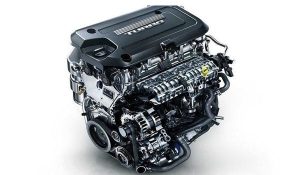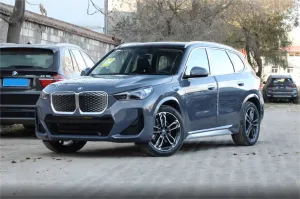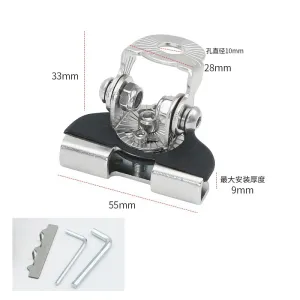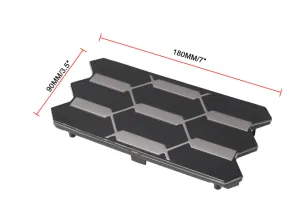The automobile engine is the device that provides power for the automobile. It is the heart of the automobile and determines the power, economy, stability and environmental protection of the automobile. According to different power sources, automobile engines can be divided into diesel engines, gasoline engines, electric vehicle motors and hybrids.

Common gasoline engines and diesel engines are reciprocating piston internal combustion engines, which convert the chemical energy of the fuel into the mechanical energy of piston movement and output power to the outside. The gasoline engine has high speed, low mass, low noise, easy starting, and low manufacturing cost; the diesel engine has a large compression ratio, high thermal efficiency, and better economic performance and emission performance than the gasoline engine.
History development #
The engine is the power source of the car. Most automobile engines are thermal energy power devices, referred to as heat engines. Thermal engine converts the thermal energy generated by fuel combustion into mechanical energy by means of the state change of the working fluid.
In 1876, the German Nicolaus A. Otto invented the reciprocating piston four-stroke gasoline engine based on the atmospheric pressure engine. Due to the use of four strokes of intake, compression, power and exhaust, the thermal efficiency of the engine is increased from 11% of the atmospheric pressure engine to 14%, while the mass of the engine is reduced by 70%.
In 1892, German engineer Rudolf Diesel invented the compression-ignition engine (diesel engine), achieving the second major breakthrough in the history of internal combustion engines. Due to the high compression ratio and expansion ratio, the thermal efficiency was doubled compared to other engines at the time.
In 1926, Swiss A. Buchi proposed the theory of exhaust gas turbocharging, which uses the energy of exhaust gas discharged from the engine to drive the compressor and supercharge the engine. After the 1950s, exhaust gas turbocharging technology began to be gradually applied to vehicle internal combustion engines, greatly improving engine performance and becoming the third major breakthrough in the history of internal combustion engine development.
In 1956, the German Wankel invented the rotary engine, which greatly increased the engine speed.
In 1964, the German NSU company installed a rotary engine on a car for the first time.
In 1967, the German company Bosch introduced the electronic fuel injection system (Electronic Fuel Injection, EFI) controlled by an electronic computer for the first time, creating a history of the application of electronic control technology in automobile engines. After 30 years of development, the engine management system (Engine Management System, EMS) with electronic computers as the core has gradually become a standard configuration on automobiles (especially car engines). Due to the application of electronic control technology, the engine’s pollutant emissions, noise and fuel consumption have been greatly reduced, and its power performance has been improved. This has become the fourth major breakthrough in the history of internal combustion engine development.
In 1967, the United States held a public demonstration of hydrogen car driving. The hydrogen car could run 121 kilometers in 10 minutes at a speed of 80 kilometers per hour. The car has 19 seats and is manufactured by the American Billings Company.
In 1971, the first bus equipped with a Stirling engine started running.
In 1972, Japan’s Honda Motor sold the Civic sedan equipped with a Compound Vertex Controlled Combustion (CVCC) engine on the market, marking the first launch of a lean gas combustion engine.
In 1977, the first international electric vehicle conference was held in Chicago, USA. During the conference, more than 100 electric vehicles of various types were on display. In 1978, Japan successfully researched hybrid vehicles. In August 1979, Brazil produced an alcohol-fueled car. Brazil is the country with the largest number of alcohol-based cars in the world.
In 1980, Japan successfully developed a liquid hydrogen vehicle. A special storage tank is installed at the rear to keep liquid hydrogen at a low temperature and at a certain pressure. The car used 85 liters of liquid hydrogen and traveled 400 kilometers at a speed of 135 kilometers per hour.
In 1980, the United States successfully trial-produced a zinc-chlorine battery electric vehicle.
In 1980, Spain successfully developed a solar car.
In 1980, an engineer in Itzehoe, northwest of Hamburg, West Germany, invented a car powered by calcium carbide gas (acetylene gas). First turn calcium carbide into gas, and then use this gas to burn to propel a jet engine to drive a car. Its speed and safety are no less than that of a gasoline car. 20 kilograms of calcium carbide can enable the car to travel at least 300 kilometers.
In 1980, John Cooper and Erwin Beren of the University of California began to study “burned aluminum” electric vehicles.
In 1983, the world’s first car equipped with a diesel ceramic engine successfully ran tests. The engine installed was developed by Japan’s Kyoto Ceramics Company. Its main components are made of ceramics, eliminating the need for a cooling system. It is light in weight and has significant energy saving effects. It can travel 30% longer than a conventional engine under the same conditions.
In 1984, the former Soviet Union developed a dual-fuel vehicle. When the car is started, it uses gasoline first and then natural gas.
In 1984, Amocoby Chemical Company of Mobil Oil Company of the United States developed a synthetic material called Dulon plastic. The company used this plastic to successfully create the world’s first all-plastic automobile engine. The weight is only 84 kg. The American Lora T-616GT car uses this all-plastic engine.
In 1984, Australian engineer Shalish successfully developed an OCP engine.
In 1985, Australia’s Pilandin developed a steam engine car that was safe, reliable, flexible to start, high-speed and smoke-free.
In 1986, Japan’s Sanyo Electric Company successfully developed the first solar cell car.
In 1994, David Byrne of the United Kingdom invented another wind-powered car and has put it into mass production.
Structure #
The engine is composed of two major mechanisms, the crank connecting rod mechanism and the valve mechanism, as well as five major systems including cooling, lubrication, ignition, fuel supply, and starting system. The main components include cylinder block, cylinder head, piston, piston pin, connecting rod, crankshaft, flywheel, etc. The working chamber of a reciprocating piston internal combustion engine is called a cylinder, and the inner surface of the cylinder is cylindrical. The piston that reciprocates in the cylinder is hinged to one end of the connecting rod through the piston pin, and the other end of the connecting rod is connected to the crankshaft. The crankshaft is supported by the bearing on the cylinder block and can rotate within the bearing to form a crank-connecting rod mechanism. When the piston reciprocates in the cylinder, the connecting rod drives the crankshaft to rotate.
On the contrary, when the crankshaft rotates, the connecting rod journal makes a circular motion in the crankcase, and drives the piston up and down in the cylinder through the connecting rod. Every time the crankshaft rotates once, the piston moves up and down once, and the volume of the cylinder continuously changes from small to large, then from large to small, and the cycle continues. The top of the cylinder is closed with a cylinder head. The cylinder head is equipped with intake valves and exhaust valves. By opening and closing the intake and exhaust valves, the air is filled into the cylinder and the air is exhausted out of the cylinder. The opening and closing of the intake and exhaust valves are driven by the camshaft. The camshaft is driven by the crankshaft through a toothed belt or gear.

 April 1, 2024
April 1, 2024 










